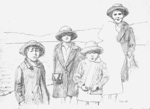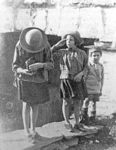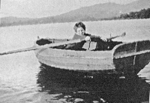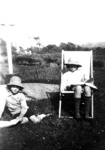
|
The Altounyan children in 1928 at the time they got to know Arthur Ransome.
Sketch from a 1928 snapshot; © and courtesy of Roger Wardale.
|
|

|
Titty and Susie Altounyan with Suzanne Rawdon-Smith (center), 1928,
courtesy of Rahel Guzillian. Suzanne Rawdon-Smith and her sister Hope were
cousins of Pauline and Georgina Rawdon Smith (see below).
|
|

|
Taqui?, Titty and Roger Altounyan in Hawkshead, 1928, courtesy of Rahel Guzillain.
|
|

|
Roger Altounyan in Tub, 1928, courtesy of Barbara Altounyan.
|
|
|


